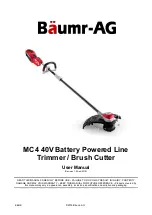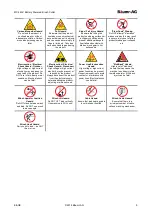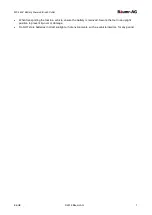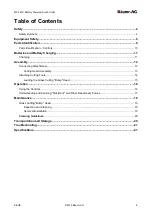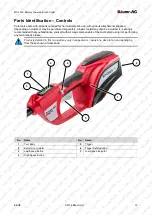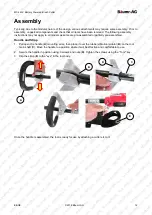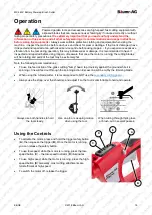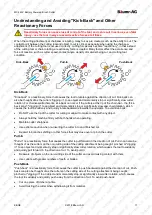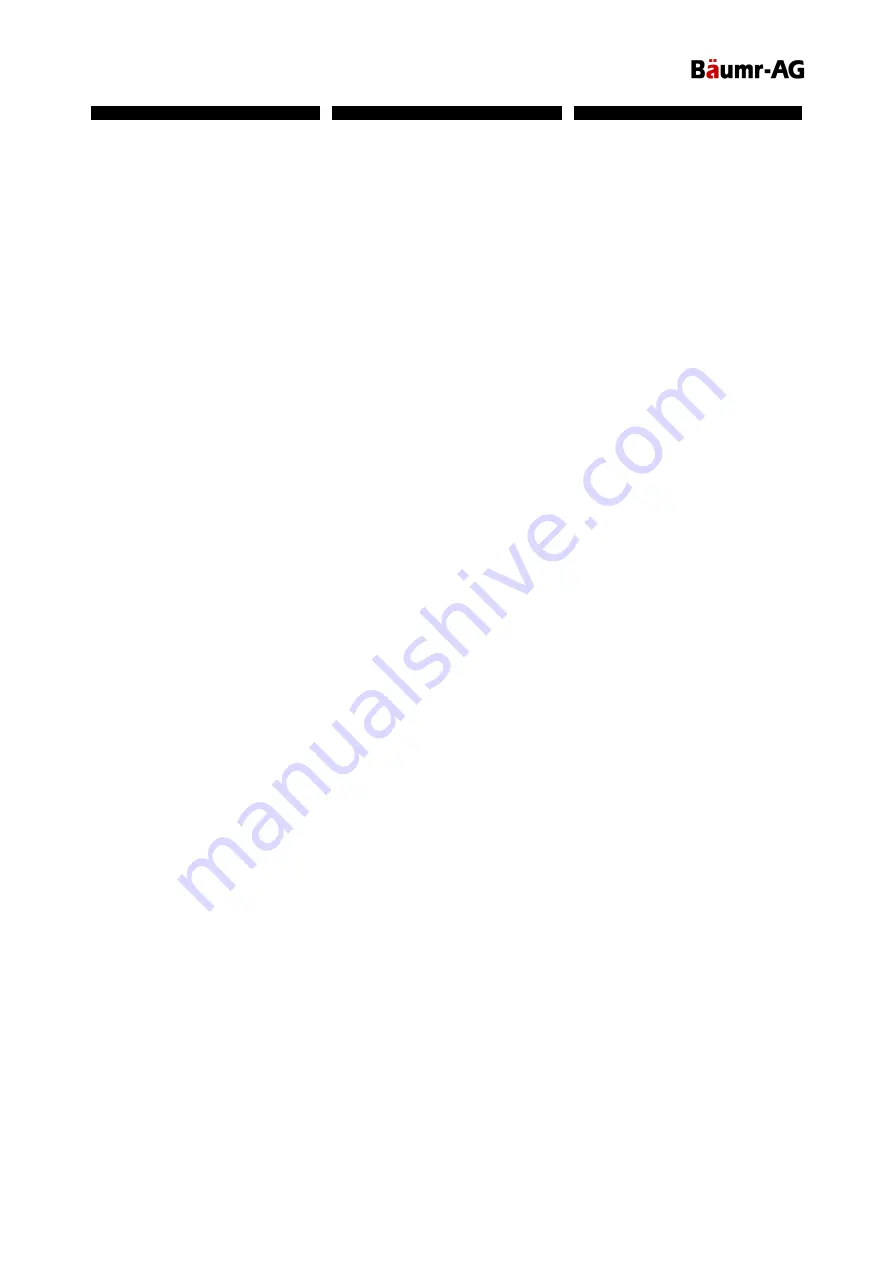
MC4 40V Battery Powered Brush Cutter
E&OE
©2018 Bäumr-AG
3
General Battery and Charging Safety
•
Use only with the batteries and battery
charger specified by the manufacturer.
•
When battery is charged, disconnect
the charger from the power supply and
remove the battery from the charger.
•
Batteries can explode in the presence
of an ignition source, such as a pilot
light. To reduce the risk of serious
personal injury, never use any cordless
product in the presence of
open flame.
Exploding batteries can propel debris
and chemicals.
•
Do not use the charger in wet areas or
expose it to rain or water.
•
Do not open the battery – danger of
short-circuiting and/or explosion.
•
Do not attempt to destroy or
disassemble the battery pack or
remove any of its components.
•
Do not touch the battery terminals with
metal objects and/or body parts as
short-circuit and/or personal injury may
result.
•
Explosion hazard – protect the battery
against heat; for example, direct
sunlight and fire. Do not store batteries
in vehicles or locations subject to heat.
•
Explosion hazard – do not open and/or
short-circuit the battery.
•
Poison hazard – battery leakage (liquid
ejection). Under extreme conditions,
liquid may be ejected from the battery –
avoid contact. If contact accidentally
occurs, immediately seek medical
attention, and flush with water. If liquid
contacts eyes, immediately seek
medical attention, flush with clean water
for at least 10 minutes. Liquid ejected
from the battery may cause irritation or
burns.
•
Ensure that the battery charger
electrical cord is not subjected to
damage or stress. Do not operate the
battery charger if it has a damaged
electrical cord or plug.
•
For best results, charge batteries in
temperatures between 7°C (45°F) and
40°C (104°F).
•
Dispose of non-serviceable batteries in
an environmentally responsible manner
and according to local regulations.
General Electrical Safety
•
Inspect electrical equipment, extension
cords, power bars, and electrical fittings
for damage or wear before each use.
Repair or replace damaged equipment
immediately.
•
Ensure all power sources conform to
equipment voltage requirements and
are disconnected before connecting or
disconnecting equipment.
•
When wiring electrically powered
equipment, follow all electrical and
safety codes.
•
Wherever possible, use a residual
current device (RCD).
•
High voltage / high current power lines
may be present. Use extreme caution
to avoid contact or interference with
power lines. Electrical shock can be
fatal.
•
Electrically grounded equipment must
have an approved cord and plug and be
connected to a grounded electrical
outlet.
•
Do NOT bypass the ON/OFF switch
and operate equipment by connecting
and disconnecting the electrical cord.
•
Do NOT use equipment that has
exposed wiring, damaged switches,
covers or guards.
•
Do NOT use electrical equipment in wet
conditions or in damp locations.
•
Do NOT use electrical cords to lift,
move or carry equipment.
•
Do NOT coil or knot electrical cords,
and ensure electrical cords are not trip
hazards.
General Service Information
•
The equipment must be serviced or
repaired at authorised service centres
by qualified personnel only.
•
Replacement parts must be original
equipment manufacturer (OEM) to
ensure equipment safety is maintained.
•
Do NOT attempt any maintenance or
repair work not described in this
manual.
•
After use, the equipment and
components may still be hot – allow the
equipment to cool and disconnect
spark plugs and/or electrical power
sources and/or batteries from it before
making adjustments, changing
accessories or performing repair or
maintenance.
•
Do NOT make adjustments while the
equipment is running.
•
Perform service related activities in
suitable conditions, such as a
workshop.
•
Replace worn, damaged or missing
warning/safety labels immediately.

